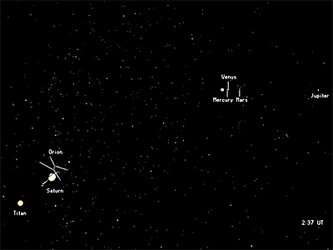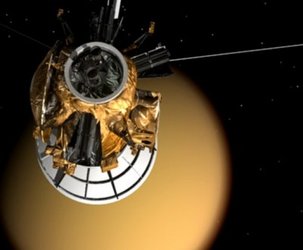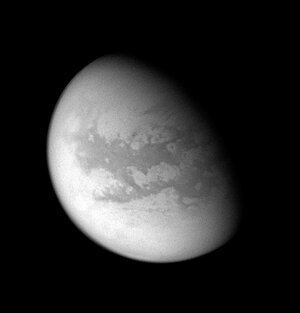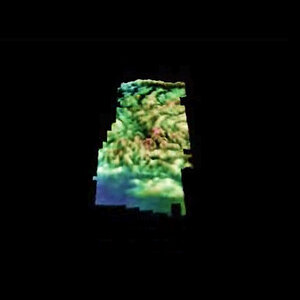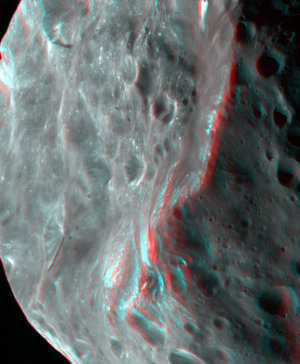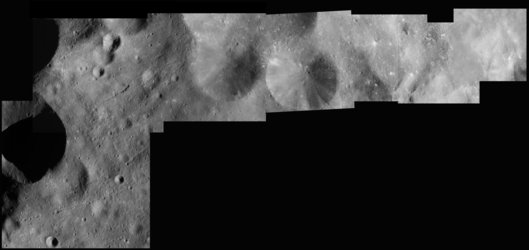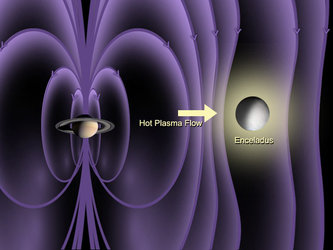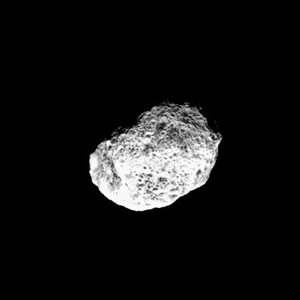Movie of Titan's surface in the infrared
This movie of Titan shows data taken with NASA/ESA/ASI Cassini spacecraft's Visual and Infrared Mapping Spectrometer during the last three fly-bys of Titan.
The viewing geometry of the December fly-by is roughly on the opposite hemispheres of the fly-bys in October and January. There are several important features shown by this movie.
First, the globe of Titan exhibits two major types of terrain. One is very bright, and a darker one seems to be concentrated near the equator. Titan also has two very bright regions, the large one known as Tui Reggio, and the other as Hotei Arcus.
These regions are thought to be surface deposits, probably of volcanic origin, and may be water and/or carbon dioxide frozen from the vapour.
The December fly-by data show that the western margins of Tui Reggio have a complex flow-like structure consistent with eruptive phenomena. The reddish feature at the south pole is Titan's south polar cloud system, which was very bright during the December fly-by.
During the October and January fly-bys it is barely visible, indicating that the atmosphere over Titan's south pole is very dynamic.
The Cassini-Huygens mission is a co-operative project of NASA, the ESA and ASI, the Italian space agency.
For more information:
Jean-Pierre Lebreton, ESA Huygens Mission Manager
E-mail: jplebret @ rssd.esa.int















 Germany
Germany
 Austria
Austria
 Belgium
Belgium
 Denmark
Denmark
 Spain
Spain
 Estonia
Estonia
 Finland
Finland
 France
France
 Greece
Greece
 Hungary
Hungary
 Ireland
Ireland
 Italy
Italy
 Luxembourg
Luxembourg
 Norway
Norway
 The Netherlands
The Netherlands
 Poland
Poland
 Portugal
Portugal
 Czechia
Czechia
 Romania
Romania
 United Kingdom
United Kingdom
 Slovenia
Slovenia
 Sweden
Sweden
 Switzerland
Switzerland






























